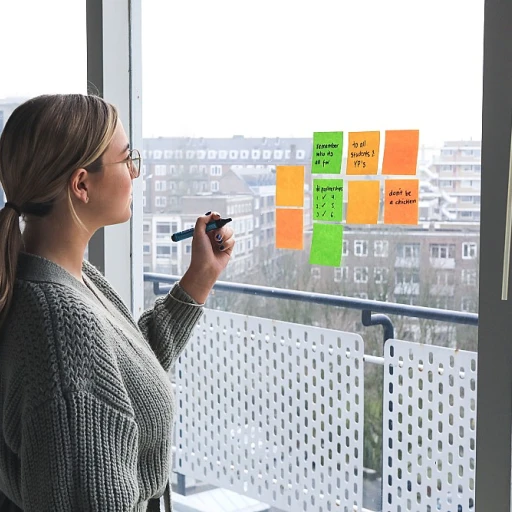-teaser.webp)
Understanding the Importance of Backfilling
Recognizing the Significance of Position Backfill
In today's fast-paced business environment, understanding the importance of backfilling vacant roles within an organization is critical. As employees leave or move to different positions, it becomes crucial to address these gaps promptly. This not only ensures continuity but also maintains the operational efficiency of teams and departments.
Employers must recognize that backfilling a role is not merely about finding someone to carry out job duties. It's about selecting the right talent to fit the team's dynamics, ensuring a smooth transition, and aligning their skills with the organization’s long-term strategic goals.
Backfilling positions expedites ongoing projects and prevents workload imbalances among team members. Implementing effective strategies such as succession planning and internal recruitment helps organizations to reposition internal talent, promoting professional development among current employees while strengthening organizational resilience. Internal employees are often better situated to pick slack quickly during transitions, saving the organization time and resources.
Moreover, developing a comprehensive backfill plan places emphasis on the bigger picture—long-term growth and adaptability of the organization. By prioritizing backfill best practices, companies can address succession challenges, mitigate the risks associated with sudden employee departures, and foster a culture of ready-to-step-in employees who are prepared for new or advanced roles.
To get a deeper understanding of workforce strategies, it's beneficial to explore how leaders oversee talent management. A valuable resource can be found on the role of a talent director in modern workforce planning, offering insights into acquiring and nurturing skilled employees.
Identifying the Right Candidate for Backfilling
Identifying Ideal Candidates for Position Backfill
When a position becomes vacant in your organization, finding the right candidate to fill the job is both crucial and strategic. Ensuring you have the best-fit employee ready to step into the role requires a comprehensive understanding of necessary skills and current employees' capabilities and interests. Here are some aspects to consider when identifying candidates for backfilling:
- Understanding the Job Description: Before filling a vacant position, it is important to analyze the current role's job description. This helps in identifying the key skills and responsibilities that the employee must possess to seamlessly integrate into the team.
- Assessing Internal Talent: Consider existing employees who might be suitable for the job. This not only saves time in the hiring process but also offers a path for employee promotion and professional development. Having a backfill plan in place allows you to identify and prepare internal candidates through cross-training and mentorship opportunities.
- Considering External Options: Although internal candidates can be a great fit, sometimes external hiring is necessary. This could be due to the need for fresh perspectives or specialized skills that current team members do not possess. It's important to balance internal promotions with the infusion of new talent.
- Evaluating Short-Term vs. Long-Term Needs: Depending on the circumstances, an organization might aim to find an interim employee for immediate needs or fill the position with a permanent hire who aligns with long-term goals. This choice impacts succession planning and organizational growth.
Proper talent management systems can greatly assist in identifying the right candidates by allowing organizations to track and evaluate employee skills and aspirations efficiently. Enhancing your workforce planning with advanced systems will help in making informed decisions about backfilling positions effectively.
Challenges in Backfilling Positions
Overcoming Obstacles in Backfilling Roles
Backfilling positions can be a complex task, often fraught with challenges that can disrupt the workflow of an organization. Understanding these challenges is crucial for developing effective strategies to fill vacant roles efficiently.
One of the primary challenges in backfilling is the time constraint. When an employee leaves or is promoted, the gap left behind can strain the remaining team members who must pick up the slack. This can lead to burnout and decreased productivity if not managed properly. Therefore, having a backfill plan in place is essential to minimize disruption.
Another significant challenge is identifying the right skills required for the position backfill. The job description may not always capture the nuances of the role, making it difficult to find a candidate who fits seamlessly into the team. This is where internal talent and succession planning come into play. By focusing on the professional development of current employees, organizations can prepare them to step into new roles when needed.
Additionally, internal competition can pose a challenge. When backfilling positions, organizations may face resistance from employees who feel overlooked for promotions or new opportunities. Transparent communication and clear criteria for selection can help mitigate these concerns.
Finally, cross-training and knowledge transfer are often overlooked but are vital components of a successful backfill strategy. Ensuring that team members are equipped with the necessary skills and knowledge to transition smoothly into new roles will help maintain continuity and reduce the learning curve for new hires.
To tackle these challenges, organizations can benefit from adopting best practices in workforce planning. For more insights on enhancing employee potential, consider exploring outskilling strategies that can prepare your workforce for future transitions.
Strategies for Seamless Transition
Facilitating a Smooth Transformation
To ensure a seamless transition when it comes to backfilling positions, organizations must pay careful attention to the strategies they employ. A thorough plan can minimize disruption and maintain operational flow. Here's how to effectively navigate this process:- Clear Job Descriptions: A well-defined job description is essential in identifying the suitable candidate for the vacated role. It outlines the skills and responsibilities, making it easier to match candidates with necessary qualifications.
- Cross-Training Team Members: Developing internal talent through cross-training can prepare current employees to pick up slack, reducing the time needed to fill vacant positions and allowing for flexible coverage during transitions.
- Succession Planning: By proactively identifying potential candidates for key roles, the organization ensures that the departure of an employee does not catch the team unprepared. Involving potential successors in meetings and decision-making processes will help them gain necessary insights and skills.
- Internal Promotions: Rewarding employees through promotion keeps talent within the organization, boosts morale, and reduces the learning curve associated with new hires. Promotions demonstrate trust and can act as an incentive for employee retention.
- Comprehensive Onboarding Programs: When hiring externally, ensure robust onboarding processes that introduce new hires effectively to the team dynamics and job expectations, speeding up their productivity.
The Role of Technology in Backfilling
Embracing Digital Tools for Optimal Backfilling
The modern era of workforce planning has paved the way for technological advancements that streamline the process of backfilling positions. Organizations are increasingly turning to digital solutions to fill vacant roles efficiently, ensuring minimal disruption to their operations. To begin with, technology aids in maintaining a comprehensive database of current employees, enabling organizations to identify suitable talent for vacant roles quickly. By leveraging tools specifically designed for internal workforce analysis, companies can match the necessary skills with job requirements in real time. This helps in creating a more effective backfill plan. Moreover, workforce management systems empower HR teams to access detailed job descriptions and succession planning resources. This ensures that the work continues seamlessly when a valued employee leaves. Automation tools are instrumental in identifying gaps in talent and suggesting potential employees who can step in, either temporarily or as a permanent solution. Let's not forget the role of data analytics. Analyzing patterns related to employee promotion and professional development feeds into a strategic approach to backfilling positions. Organizations are thus better equipped to make informed decisions, optimizing both short-term and long-term talent needs. Cross-training and upskilling initiatives also benefit greatly from digital platforms. These platforms enable team members to enhance their skills, preparing them to pick up slack when necessary. Not only does this ensure continuity, but it also promotes a culture of growth, ultimately benefiting the entire organization. In summary, utilizing technology in backfilling harnesses the power of real-time data, organized information, and streamlined processes. This technological band aids the bigger picture in workforce planning, ensuring that each role within the organization is filled efficiently and effectively.Long-term Implications of Backfilling
Long-term Effects and Future Preparedness
In the context of workforce planning, organizations often view backfilling as a short term fix for vacant positions. However, the practice of backfilling has significant long-term implications that can shape the future dynamics of an organization. This process is not simply about finding a quick replacement for an employee who has left, but a strategic opportunity to enhance the team’s overall capability and resilience. Understanding the long-term impact of backfilling involves recognizing its role in:- Succession Planning: Effective backfilling can ensure that there is a robust plan in place for succession. By nurturing current employees and preparing them for future roles, organizations can fill higher-level positions internally, reducing the need for external hiring.
- Professional Development: Backfilling provides existing team members with opportunities for professional growth. Employees who are cross-trained can step into new roles with a deeper understanding of the job requirements, which can help the organization retain talent and reduce turnover rates.
- Skills Enhancement: As internal employees are promoted or assume new responsibilities, they gain new skills and competencies. This not only benefits the individual but also enhances the organization’s talent pool, making it easier to fill future roles with adequately prepared individuals.
- Implementing Best Practices: Incorporating best practices that involve clear job descriptions and defining career pathways can support employees in understanding how they fit into the organization's future.
- Continuous Monitoring: Regularly reviewing and adapting backfill plans will help organizations anticipate changes in the job market and adjust their workforce strategies accordingly.














